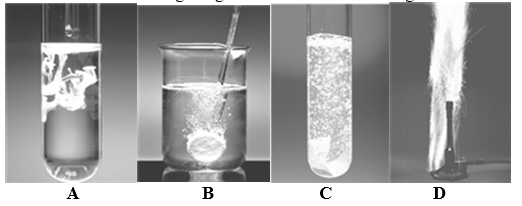Multiple Choice
Consider the following images.The reactions occurring in each are shown in the choices. 
Which of the following is an example of an electron transfer reaction?
A) Pb(NO3) 2(aq) + Na2SO4(aq)  2 NaNO3(aq) + PbSO4(s)
2 NaNO3(aq) + PbSO4(s)
B) H2CO3(aq)  H2O(l) + CO2(g)
H2O(l) + CO2(g)
C) Ca(s) + 2HCl(aq)  CaCl2(aq) + H2(g)
CaCl2(aq) + H2(g)
D) Zn(s) + Cu2+(aq)  Zn2+(aq) + Cu(s)
Zn2+(aq) + Cu(s)
E) Both c and d are electron transfer reactions.
Correct Answer:

Verified
Correct Answer:
Verified
Q16: Balance the following redox equation in acidic
Q17: In the reaction of carbon with oxygen,which
Q18: What is the oxidation number of chromium
Q19: Examine the two beakers shown below. <img
Q20: Which among the following are the parts
Q22: Silver metal will not react with hydrochloric
Q23: Which of the following processes is a
Q24: What is the oxidizing agent in this
Q25: Consider the following beakers.In the beaker on
Q26: What is the half-reaction for the oxidation